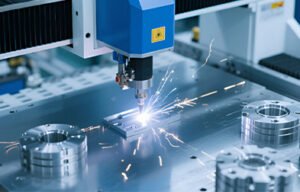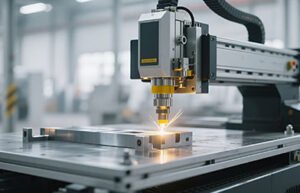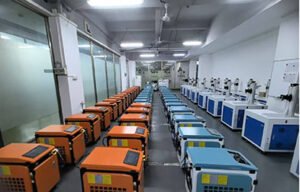- Home
- »
- Uncategorized
- »
- Medical Device …
BLOG
CONTACT US
Medical Device Laser Welding Machine | Precision, Clean, and Seamless Welding for Medical Manufacturing
Medical Device Laser Welding Machine
Introduction to Laser Welding in the Medical Industry
Laser welding technology has revolutionized manufacturing across various industries, and the medical sector is no exception. With strict hygiene standards, the demand for miniaturized components, and the need for flawless joining methods, laser welding has become an essential technology for medical device production.
Medical devices such as surgical instruments, endoscopes, pacemakers, catheters, and implants require highly precise and contamination-free welds. This is where laser welding stands out, offering unmatched accuracy and cleanliness in the joining process.
Why Choose Laser Welding for Medical Devices
Medical-grade welding must comply with the highest standards of safety, durability, and biocompatibility. Laser welding machines offer several advantages that make them ideal for manufacturing medical devices:
Precision: Laser beams can be focused to extremely small diameters, allowing for highly precise welding of miniature parts.
Non-contact Process: No physical contact means reduced risk of contamination or mechanical stress.
Minimal Thermal Impact: Reduces the risk of thermal deformation and preserves material integrity.
Repeatability: Automated laser systems offer consistent welding results across high production volumes.
Key Features of a Medical Laser Welding Machine
When selecting a laser welding machine for medical applications, the following features are critical:
Clean and Narrow Weld Seams: Essential for aesthetics, hygiene, and functionality.
Low Heat Affected Zone (HAZ): Prevents material damage and distortion.
High Speed and Accuracy: Ideal for mass production and delicate components.
Microscopic Monitoring Systems: Assures real-time precision and process validation.
Closed-Loop Control: Ensures uniform penetration depth and weld quality.
Automation Integration: Facilitates robotic welding arms and conveyor systems.
Applications of Laser Welding in Medical Device Manufacturing
Laser welding is used in a wide variety of medical devices. Some common applications include:
Surgical Tools: Scalpels, forceps, scissors, and clamps.
Implants: Titanium plates, screws, spinal rods, and orthopedic parts.
Catheters and Stents: Joining ultra-thin tubing and wire structures.
Endoscopic Equipment: Micro-welding of housings and optics.
Pacemakers and Defibrillators: Hermetic sealing of electronic casings.
Hearing Aids and Diagnostic Tools: Precision joining of small plastic and metal parts.
Materials Compatible with Medical Laser Welding
A wide range of materials used in medical device production are compatible with laser welding, including:
Stainless Steel (316L, 304, 17-4 PH)
Titanium and Titanium Alloys
Nitinol
Platinum and Gold Alloys
Cobalt-Chromium Alloys
Medical-grade Plastics (e.g., Polycarbonate, Polyamide)
Laser welding machines can be configured to handle different wavelengths and power levels to suit these materials effectively.
Advantages Over Traditional Welding Methods
Compared to conventional methods such as TIG or MIG welding, laser welding offers superior performance in the medical field:
Higher Precision and Cleaner Welds
No Need for Filler Material
Faster Processing Speed
Reduced Need for Post-weld Processing
Easier Quality Control and Traceability
Better Aesthetic and Functional Outcomes
In addition, laser welding meets the strict regulatory compliance standards required in the medical manufacturing sector, including ISO 13485 and FDA guidelines.
Integration with Automation and Quality Control
Modern laser welding machines for medical applications often come with full automation and process monitoring capabilities. These include:
Robotic Integration: Enables precise and repeatable positioning.
Vision Systems: For real-time alignment and defect detection.
Data Logging: Ensures weld traceability for quality audits.
Non-Destructive Testing (NDT): Integration for post-weld validation.
Automation not only boosts efficiency but also helps maintain consistent quality—crucial in medical device production.
How to Select the Right Laser Welding Machine for Medical Use
When choosing a laser welding machine for medical devices, consider the following factors:
Type of Laser Source: Fiber lasers, Nd:YAG lasers, or diode lasers depending on application.
Power Requirements: Match your production volume and material needs.
Wavelength Compatibility: Ensure it suits your materials (metals vs. plastics).
Cooling System: Important for long-hour precision work.
Software and Interface: Look for user-friendly systems with automation options.
Certification and Support: Ensure the machine and manufacturer comply with international medical manufacturing standards.
JOYLASER – Your Trusted Partner in Medical Laser Welding Solutions
JOYLASER has over a decade of experience in the field of intelligent laser equipment manufacturing. Our medical device laser welding machines are:
CE and FDA certified
Designed for long-term industrial use
Capable of micro-welding and batch production
Fully customizable with modular design
We provide tailored solutions for clients in over 50 countries, ensuring excellent welding quality, fast delivery, and global technical support.
Conclusion
Medical device manufacturing demands precision, cleanliness, and compliance. Laser welding machines offer the most efficient and reliable solution to meet these requirements. Whether you are producing surgical tools, implants, or diagnostic devices, a high-quality laser welding machine can significantly enhance your production capabilities.
JOYLASER is here to help you take your medical manufacturing to the next level with cutting-edge laser welding technology.
111-1024x458.png)


